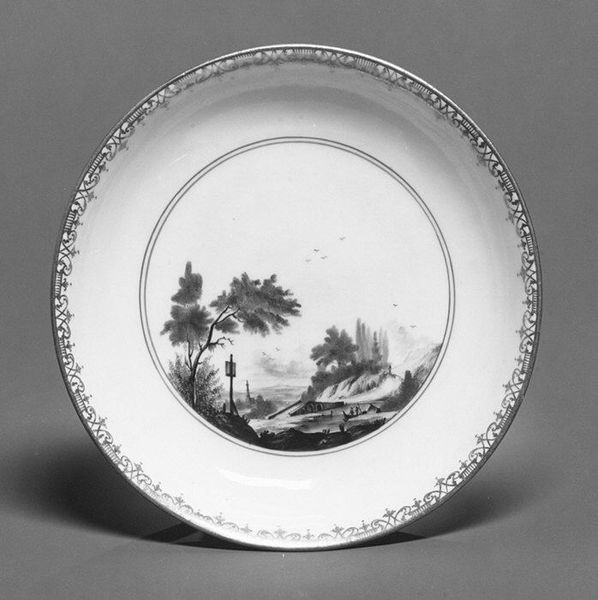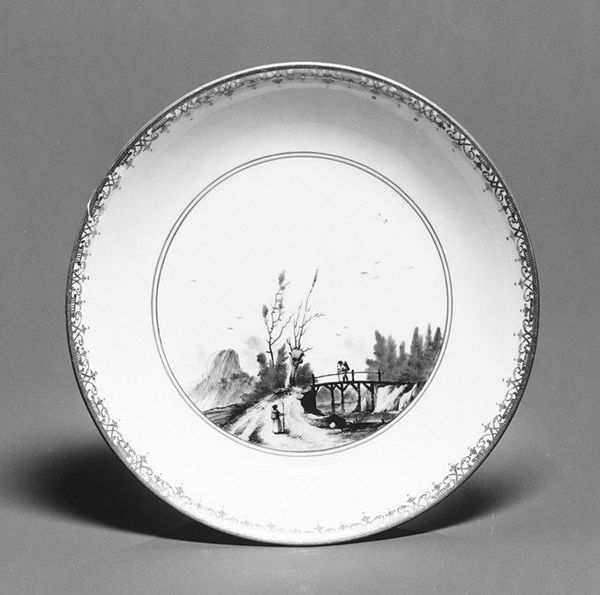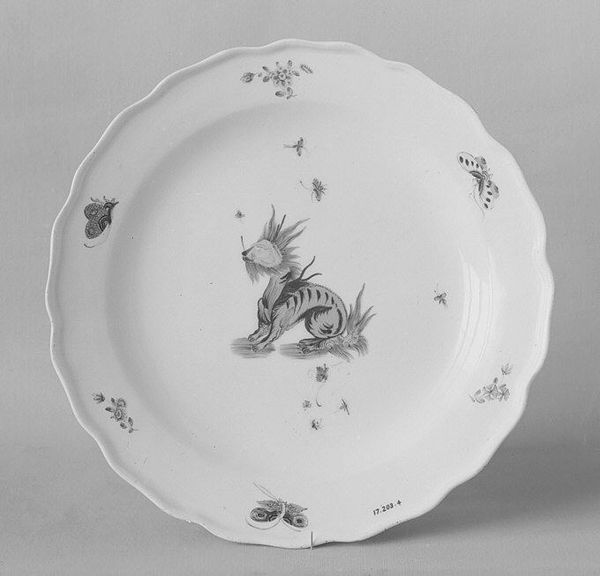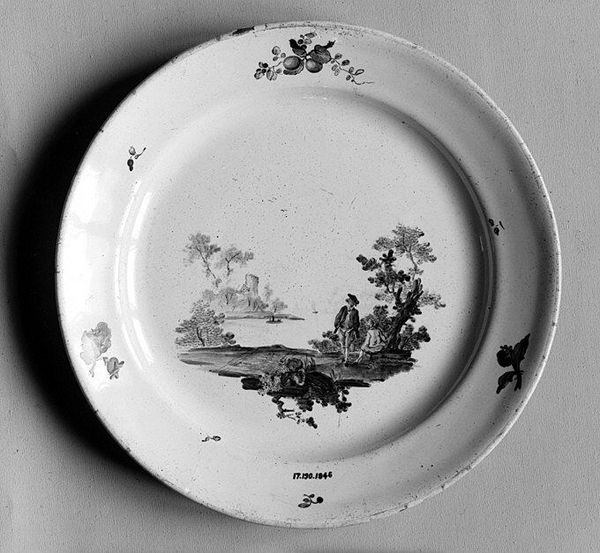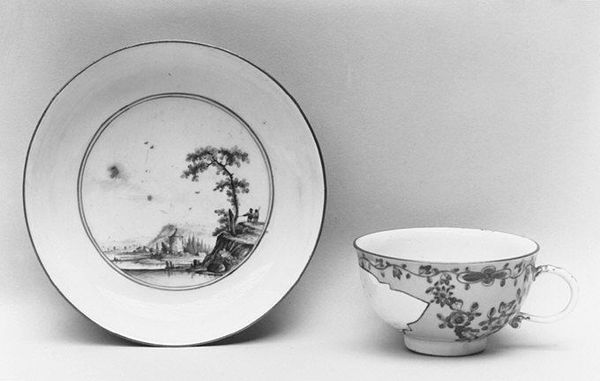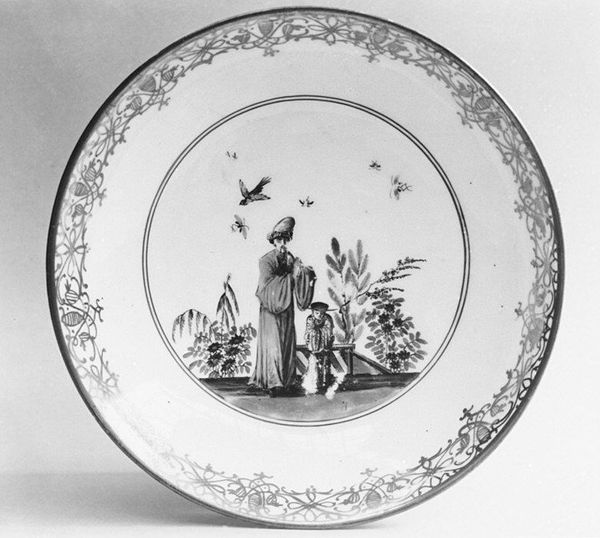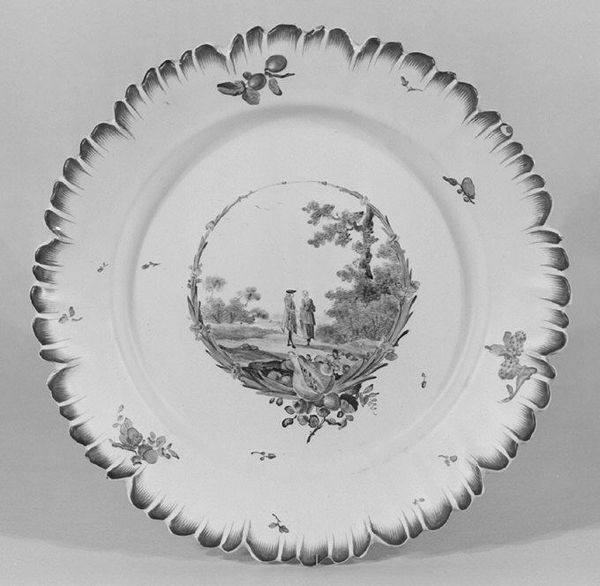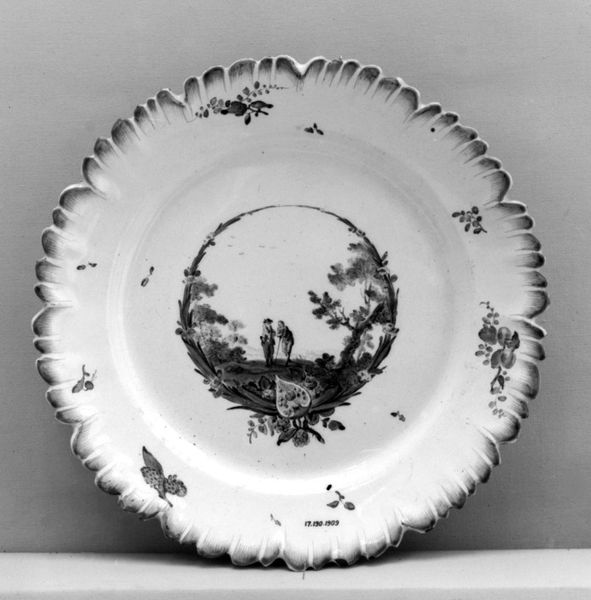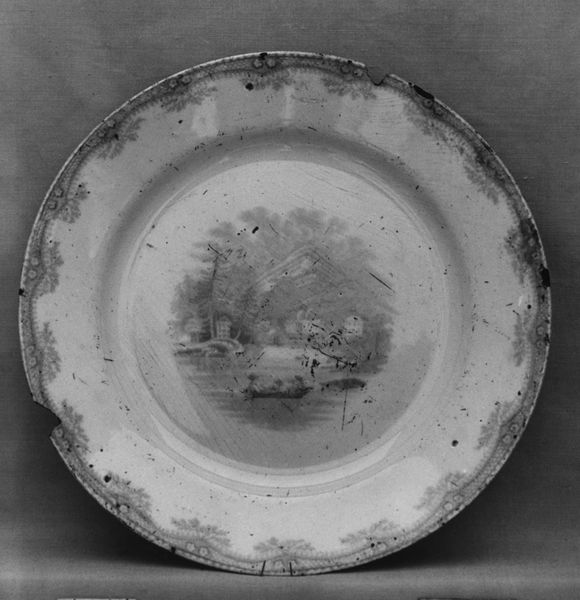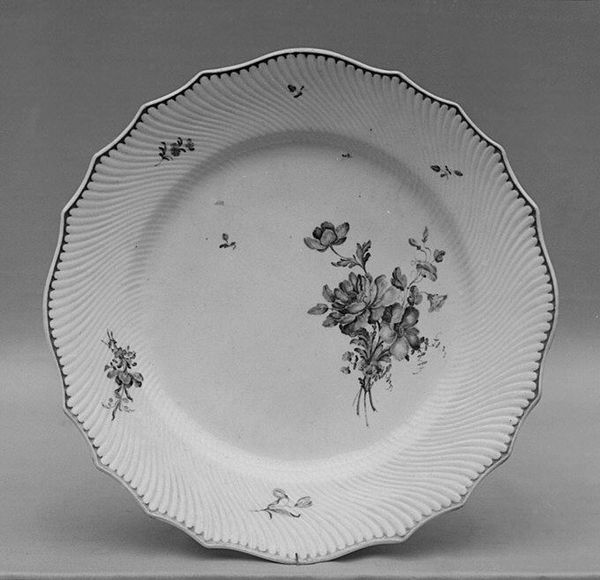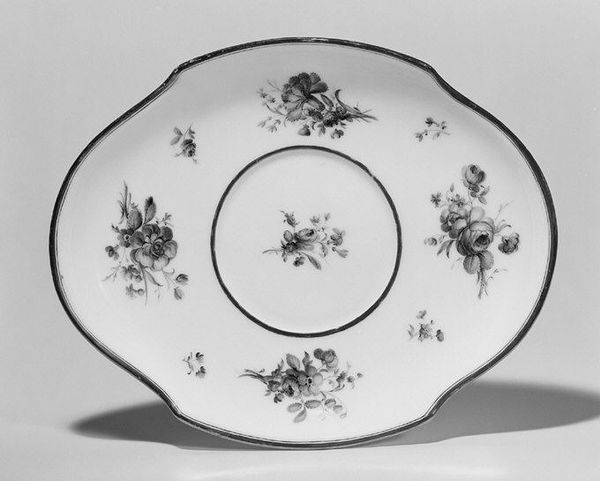
ceramic, porcelain
#
boat
#
landscape
#
ceramic
#
porcelain
#
figuration
#
orientalism
#
genre-painting
#
decorative-art
Dimensions: Diameter: 5 3/16 in. (13.2 cm)
Copyright: Public Domain
Curator: I am immediately struck by the delicate precision of the scene depicted on this saucer. The grayscale palette really brings it together. Editor: This is indeed a beautiful piece of porcelain made by the Meissen Manufactory sometime in the 18th century. The saucer is part of a larger service. Curator: Meissen, you say? Well that speaks volumes about its creation as it was, during this time period, seen as the apex of porcelain manufacturing, using both local labor and resources. The painted scene is exquisite and adds to the item's visual value, I'd guess. Editor: Indeed. The imagery on this saucer blends elements of landscape and genre painting. The central scene depicts a bustling riverside with boats and figures engaged in everyday activities. What's particularly fascinating is its embrace of what was understood as "Orientalism." Curator: How so? Beyond the obviously crafted labor within this material itself? Editor: While the scene appears to portray a generic foreign locale, the boats, architectural styles, and figural depictions are what Europeans at the time associated with the "Orient." This reflects the growing European fascination with and romanticized perception of the East. It's not quite reality. Curator: Right, it represents a cultural appropriation and a kind of commodification of foreign cultures through the lens of European art. It’s luxury, on top of imagined foreign culture, on top of everyday use! The labor is further concealed by the idyllic scene itself, really masking the material conditions of both production and use. Editor: Exactly. Think about how these wares were consumed. They were part of a ritual of dining and display among the elite, further embedding these orientalist tropes within their daily lives. We need to realize that the object carries its culture in its physical presence, so the piece broadcasts the colonial ideas around it through decoration. Curator: Very insightful. Looking at the work through both of our perspectives is certainly interesting. We have really unpacked a number of perspectives this way. Editor: Indeed, considering this porcelain first as a material object with embedded labor practices, and then as a carrier of socio-political messages, is definitely illuminating.
Comments
No comments
Be the first to comment and join the conversation on the ultimate creative platform.
